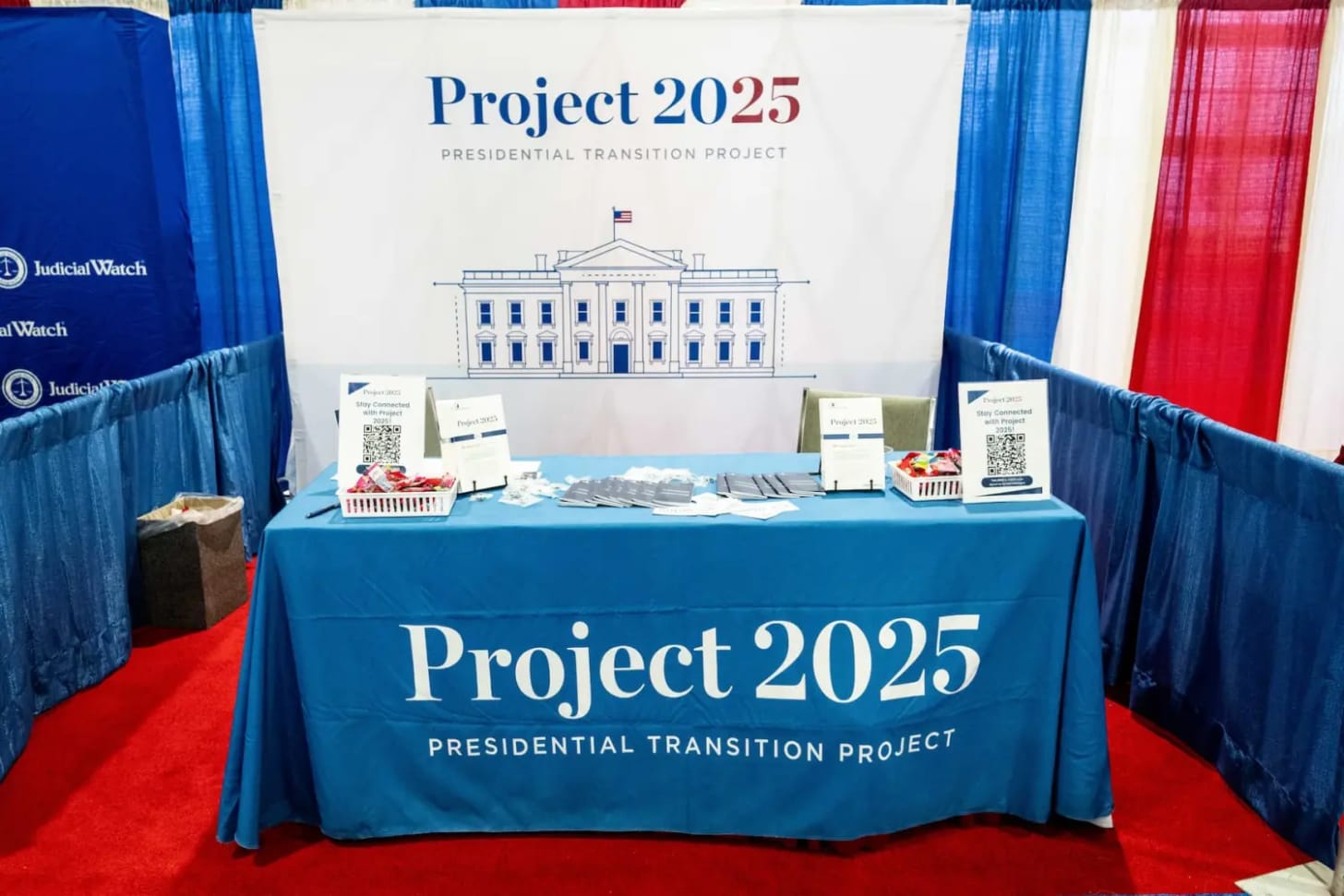The Project
What is Project 2025? You kind of know. But what is it really?
That’s the question David A. Graham of the Atlantic set out to answer in his punchy new book, “The Project: How Project 2025 is Reshaping America” which comes out next week. I interviewed David for the podcast.
“You probably haven’t read Project 2025 because it’s a 900-page document with 70 different authors,” David notes. Project 2025 was produced under the auspices of the Heritage Foundation, a fifty-year old conservative thinktank.
You likely remember Donald Trump disavowing any familiarity with Project 2025 during last year’s election. David laughs at the distinction. “Three-quarters of the authors and contributors worked in the first Trump administration, four of them at the Cabinet level.” After he won the election, Trump appointed many of its contributors to top positions, including as border czar, CIA director, chair of the SEC, and head of the Office of Management and Budget. Bloomberg found that 37 of the first 47 executive actions taken in Trump’s first few days directly or partially matched Project 2025’s recommendations.
So what’s in Project 2025? “It’s a detailed policy platform, a huge database of potential administration hires, training courses for aspiring staffers, and a playbook for a takeover of government.” David describes it as a skeleton key for understanding the second Trump presidency.
“In his first term, Trump had a hiring problem,” David relates. “This time, they wanted to have a deep bench of true believers ready and willing to occupy and operate agencies across the board.”
This might be the biggest thing to understand about Project 2025; there’s a saying in government that personnel is policy. Here, Project 2025 identified the personnel ahead of time so they could hit the ground running and ensure that they made progress on their agenda. Its foreword argues, “Conservatives have just two years and one shot to get this right.”
So what is the agenda? David says, “Project 2025 is opposed to what it sees as an obstinate bureaucracy. So its agenda is largely to massively expand the power of the president. The principals involved want Trump to be able to stock the executive branch with political appointees; to fire civil servants at will; to discard the historical impartiality of the Justice Department; to attack the statutory independence of agencies like the FCC and to seize powers of Congress for the president.” This does seem like a pretty good summary of the first 100 days.
So let’s say that power is successfully concentrated in the hands of the executive branch. What would they want to use it for? The authors of Project 2025 are right-wing conservative ideologues with a worldview. On families, they want to ban abortion nationwide and promote a traditional arrangement where women are at home and men are working. On immigration, the authors want to reduce immigration, both legal and otherwise, of any category. Student visas, work visas, H-1B visas, they want them all to either be much smaller or be eliminated entirely. They think the Department of Education should cease to exist and have any funds or authority sent to the states. It’s kind of a retro, go-back-in-time agenda.
The Project’s perspective on trade is interestingly divided. “Both pro-tariff protectionist arguments are presented as well as pro-free trade points-of-view. It’s as if they were divided on this item so they just included them both.” They want to reduce taxes on the super wealthy and on big corporations and replace it with a consumption tax that would be regressive. They are negative on safety net programs, and think that the poor should be cared for by religious organizations and philanthropy. They are hostile to the Federal Reserve.
David notes that the authors’ response to what they see as the centralization of power of the government is, perversely, the further concentration of power in the hands of the President. In the same vein, their response to what they see as the politicization of various agencies is further politicization. “For many of them, Trump is a vessel to achieve an agenda. Trump may support aspects of it, but they have a vision that they want to implement and see Trump as a way to do it.”
Project 2025 is unusual in its digging into government itself trying to change how it functions. “Even now, the changes they are making to how government works will have an impact on our way of life for years, even decades to come.” He’s not wrong, and David’s summarizing of the Project gives a very useful roadmap of what the future holds. It’s not pretty. Ideologues tend to make bad rulers. That these guys have taken power is an ugly indictment of our current political system.
For David’s book, click here. For my podcast interview with David, click here. To see what Forward is doing in your state, click here; maybe we need a Project 2029. It should be shorter than 900 pages.



